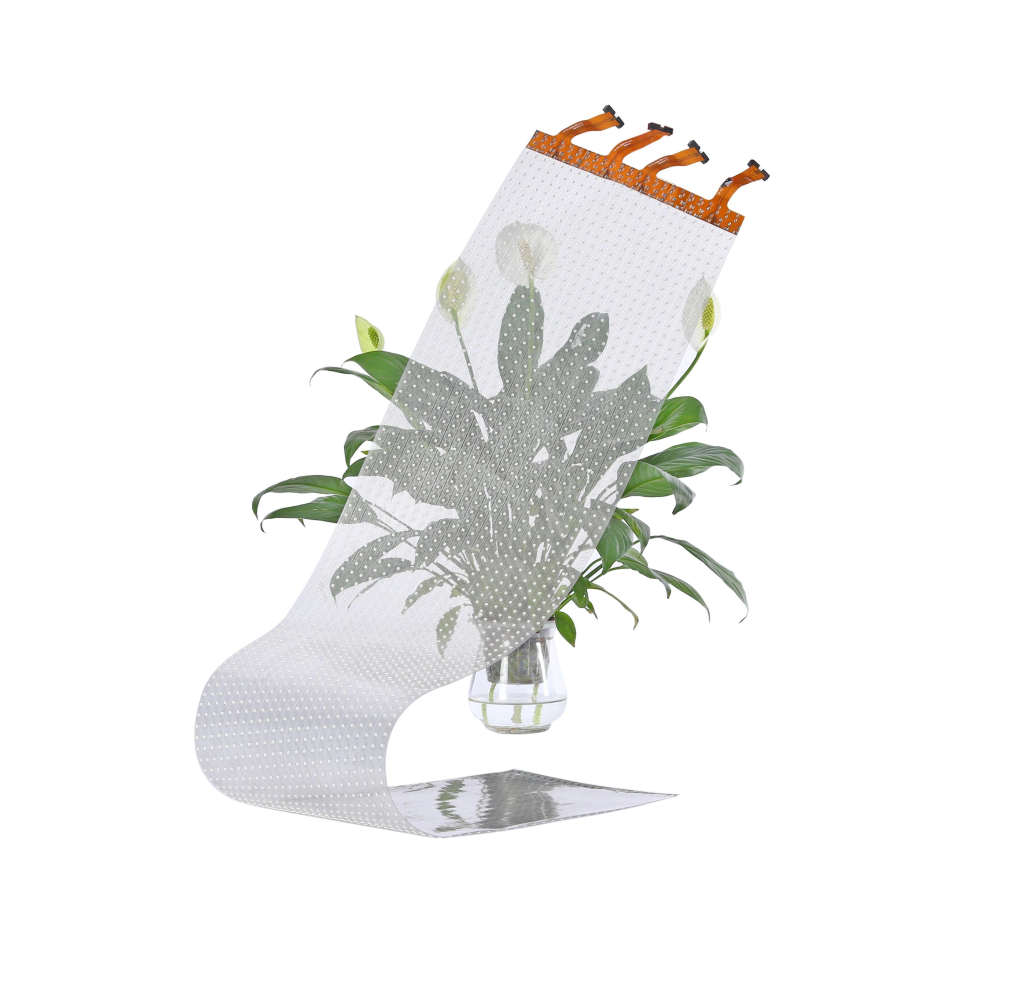A 2024 transparent film LED display represents the latest advancement in display technology, combining the benefits of LED lighting with transparent, flexible film. This technology is paving the way for innovative applications in advertising, architecture, retail, and more.
What Is a Transparent Film LED Display?
A transparent film LED display is a thin, flexible film embedded with LED elements that can display images, videos, and text while maintaining a high level of transparency. When not in use, the display remains almost invisible, allowing light to pass through and preserving the view behind it. This makes it an ideal solution for applications where both display functionality and transparency are required.
How It Works
Flexible Substrate:
The display is built on a flexible, transparent substrate, such as PET (polyethylene terephthalate) or other advanced polymers. This substrate supports the LED elements and provides flexibility.
LED Elements:
Tiny, high-brightness LED chips are embedded within the film. These LEDs are arranged in a grid or matrix pattern, which allows for even light distribution and high-resolution display capabilities.
Transparent Conductive Layers:
Layers of transparent conductive materials, such as indium tin oxide (ITO) or silver nanowires, are applied to the substrate. These layers conduct electrical current to the LED elements without obstructing visibility.
Power and Control:
The display operates on a low-voltage power supply, which is typically integrated with a control system that manages the content displayed.
The control system can be connected to a computer, media player, or other devices to display dynamic content.
Transparency and Display:
When the LEDs are off, the display remains highly transparent, allowing light and visibility through the film.
When the LEDs are on, they emit light to display images, videos, or text. The transparency is managed so that the display content is visible while still allowing some light to pass through.
Applications
Advertising and Retail:
Storefront Windows: Transparent film LED displays can be used in storefront windows to attract customers with dynamic advertisements without blocking the view into the store.
Showcases and Displays: Retailers can use these displays in showcases and product displays to provide information and promotions while maintaining a clear view of the products.
Architecture and Interior Design:
Glass Facades: Buildings can integrate transparent film LED displays into glass facades to create dynamic visual effects and interactive surfaces.
Interior Partitions: Used in offices and public spaces to create flexible partitions that can display information or change opacity for privacy.
Automotive:
Windows and Windshields: Integrated into car windows and windshields for heads-up displays (HUDs), providing drivers with information without obstructing their view.
In-Car Entertainment: Used for passenger entertainment displays that can be turned transparent when not in use.
Public Spaces and Transportation:
Bus Stops and Train Stations: Transparent LED displays can provide real-time information, advertisements, and entertainment in public transportation hubs.
Airport Terminals: Used in airport terminals for displaying flight information, directions, and advertisements.
Events and Exhibitions:
Stage Backdrops: Create dynamic stage backdrops for concerts, theater performances, and events that can change content while remaining transparent.
Exhibition Booths: Enhance exhibition booths with interactive and dynamic displays that attract attention.
Benefits
High Transparency:
Maintains high transparency when the LEDs are off, allowing natural light to pass through and preserving the view behind the display.
Suitable for applications where visibility and light transmission are essential.
Flexibility:
The flexible nature of the film allows it to be applied to curved and irregular surfaces, expanding the range of potential applications.
Can be easily integrated into existing structures without significant modifications.
Energy Efficiency:
LED technology is energy-efficient, consuming less power compared to traditional display solutions.
Reduces energy costs and is environmentally friendly.
Customization and Interactivity:
Supports dynamic and customizable content, including images, videos, and text.
Can be integrated with touch sensors and other interactive technologies for enhanced user engagement.
Aesthetic Appeal:
Provides a sleek, modern look that enhances the visual appeal of buildings and spaces.
Offers design flexibility for architects, designers, and advertisers.

